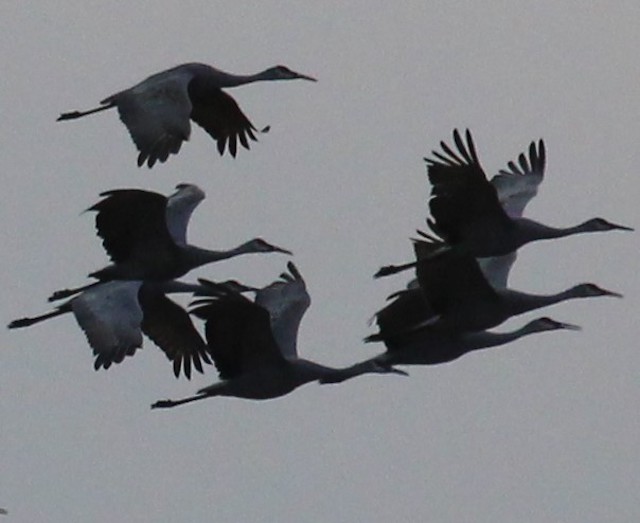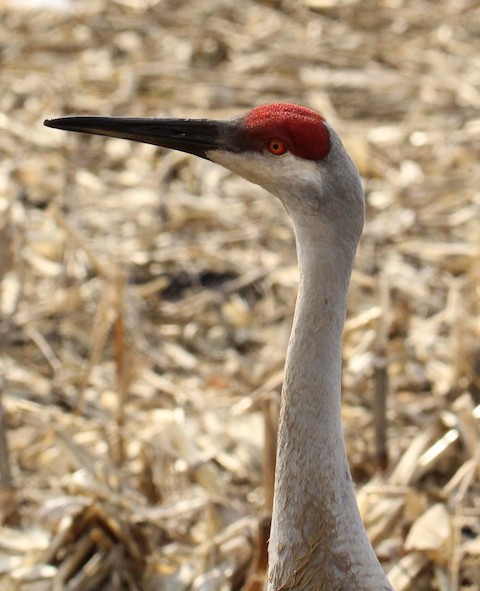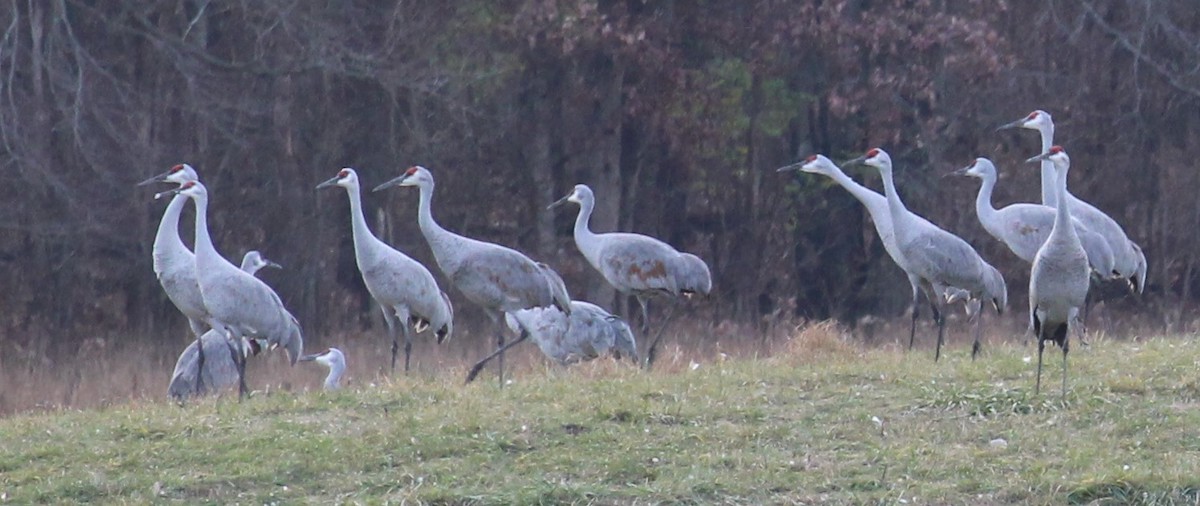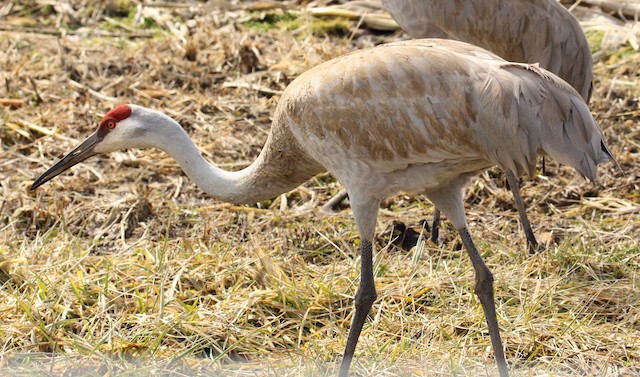Sandhill Crane! We’re now entering the time of year when the southbound migration of these magnificent birds is starting to get into full swing. The distinctive, undulating trill of a call that resonates through the autumn skies signals the overflight of another flock of cranes heading toward their southern wintering grounds.

Jasper-Pulaski Conservation Area, Indiana in November, 2020.
New Settlers in Our Neighborhood
In past years, the only time we’d see these birds in the Fox Valley area was during their spring and fall migratory flights. Those Sandhills bred farther north in Wisconsin, Minnesota, and Canada. They wintered much further south, mainly in southern Georgia and Florida, only passing over our region. In recent years, however, a small number of Sandhill Cranes have set up a breeding population locally and can be occasionally seen tending their nests and young (called “colts”) in moist fields near marshy areas (preferably with some standing water) in our beautiful Fox River Valley.
Meet the Neighbors
Sandhill Cranes are large birds, about four feet tall with large, broad wings that can span six and a half feet. They are slate grey in their overall coloration, sometimes with a rusty brown tinge on the upper part of their bodies. The adult birds have a pale cheek and bright red crown on their head that extends from their bill to the top of their head. The red crown is made of the bird’s skin, not red feathers. They have a long, dagger-like bill that they use to help them probe for seeds and tubers and also to help them catch small vertebrates (mice, frogs, snakes, etc.). They are omnivorous and eat lots of different things!
Sandhill Cranes mate for life. They typically lay a clutch of two eggs but usually only one hatchling survives to fledge. This is a general guideline though, as I have personally witnessed a single pair of Sandhills in my area with four colts!

the Jasper-Pulaski Conservation Area, northwest Indiana, November, 2020.
Still Great Travelers
During migration, they typically fly in very large flocks and will gather in traditional resting areas in flocks numbering into the tens of thousands. One such area only a couple hour’s drive from the Fox Valley area is the Jasper-Pulaski Conservation Area in northwest Indiana (about 50 miles east of Kankakee). This area provides visitors with spectacular views of the Sandhill Cranes and also provides for an outside chance of seeing a federally endangered Whooping Crane! There are between 90 and 100 Whooping Cranes that migrate in our flyway, so the odds aren’t great but I’ve seen one. That was a real thrill!
When you’re out and about and hear a strange call echoing down from above, look up! You’ll be treated to the majestic sight of a flock of Sandhill Cranes, and if you’re incredibly lucky, there might be a white bird with black wingtips (a Whooping Crane) mixed in with them.

Until next time, enjoy the natural wonders our beautiful Fox River Valley provides us!
All photos taken by Tom Schrader.



This article is very informative and interesting! Love the pictures. The close up picture shows a lot of detail. Thanks for sharing!
A couple of years ago I saw a sandhill crane family of three in the Prairie Stone business complex in Hoffman Estates. The area is low-traffic in a naturalistic setting with ponds and grasses.
Fabulous news! Thanks for the report!
Interested in non-social activities.